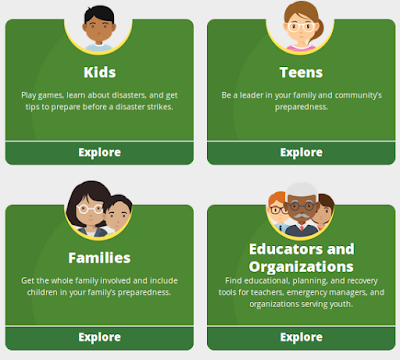
#17,692
Note: September is National Preparedness Month. Follow this year’s campaign on Twitter by searching for the #NatlPrep #BeReady or #PrepMonth hashtags.
This month, as part of #NPM23, I’ll be rerunning some updated preparedness essays, along with some new ones
- Children are among the most affected, at heightened risk of public health threats and mental health and psychosocial disorders.
- Out of 43,059 displaced by the floods according to IOM-DTM, UNICEF estimates that at least 17,000 may be children.
While we may try to tell ourselves that disasters of this magnitude can't happen here, history would suggest otherwise (e.g. 1812 New Madrid Earthquake, 1906 San Francisco Earthquake, 1992 Hurricane Andrew, etc.).
And besides, it doesn't take a mega-disaster to put you, and your family, at risk. A moderate to-large earthquake, flood, wildfire, or hurricane will do.
No matter where you live, if you've got kids, the odds they will have some sort of brush with an emergency or disaster over the next decade. Hopefully it will happen when they are with their parents, but it could happen at school, or other times when they are away from home.
As much as we'd like to spare our children the stress, grief, and physical dangers from disasters and other crises, we are all passengers on a violent and often unpredictable planet. And sometimes (warning: anachronistic cultural reference ahead), it provides us with an E-Ticket ride.
Many of us of an advanced age got our early initiation into preparedness in the Boy or Girl Scouts, where we learned basic first aid, rudimentary wilderness survival, and what to do in an emergency.
For modern kids - who are more accustomed to playing video games than playing in the woods - that is less likely to be the case.
I'm pushing 70, which makes me a the product of the cold war; the Cuban Missile Crisis, incessant duck and cover drills, weekly CONELRAD alerts on TV, and films like Survival Under Atomic Attack and `Bert the turtle’ PSAs in elementary school.
It was, admittedly, not the best way for a child to learn about emergency preparedness. But it was a different time, and for us - this was our `normal'.
Childhood trauma aside, all of this provided me with the basic skills and confidence I'd need to become an EMT (age 18) and a Paramedic (age 20). Not such a bad result, actually.
Today, while many threats remain, parents appear reticent to discuss emergency preparedness with their children. Fortunately, disaster preparedness – particularly for younger kids - has come a long way from the `bad old days’ of the cold war.

Today, while many threats remain, parents appear reticent to discuss emergency preparedness with their children. Fortunately, disaster preparedness – particularly for younger kids - has come a long way from the `bad old days’ of the cold war.

Ready.gov provides age appropriate tools for parents and teachers to teach emergency preparedness to both kids and teenagers.

READY.GOV
While most parents want to protect their kids from undo worry - when a disaster threatens, it threatens all of us – regardless of our age.
Helping kids to understand more about emergency preparedness and community resilience will help them cope (and perhaps, even help) in the event they, or their community, are caught up in a disaster.
I strongly urge parents to find and teach age-appropriate preparedness skills to their children. To include them in family `emergency drills' and discussions, and to make sure they know where to go (a friend, a neighbor, the local fire house etc.) if they should become separated from the family during an emergency.
No one can say when or where the next disaster will strike. But the advantage - no matter what their age - goes to those best prepared.
For more resources for teaching kids about emergency preparedness, you may wish to visit:
Teaching Kids About Emergency Preparedness - American Red Cross
Children In Disasters: Kids and Families -CDC
Emergency Preparedness for Children - Canadian Govt.